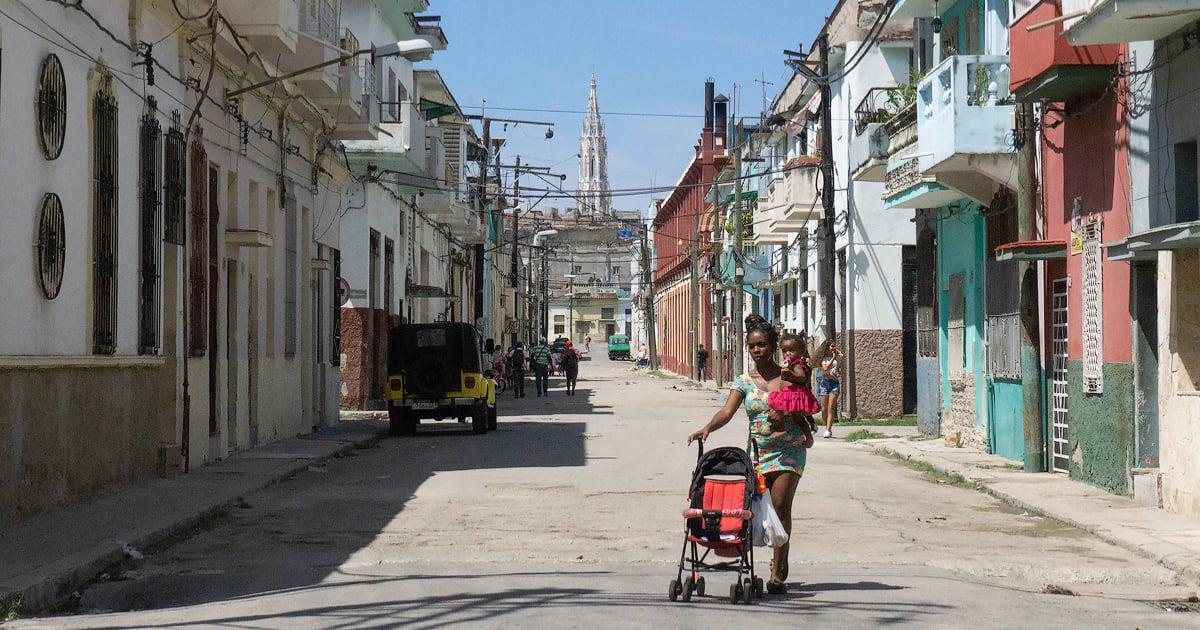An alarming demographic decline, the feminization of migration, and official manipulation of statistics are emerging from the migration crisis that has plagued Cuba over the past three years, according to a recent study by Dr. Juan Carlos Albizu-Campos Espiñeira, an expert in Economic Sciences and Demography. In an extensive interview with the independent magazine El Estornudo, the expert confirmed that Cuba lost 18% of its population between 2022 and 2023, a staggering figure that many suspected but dared not confirm; this data was finally acknowledged by the regime last week.
Albizu-Campos, whose analyses concluded that the island had only 9.4 million people by the end of 2023, revealed that an anonymous source confirmed his calculations upset the National Office of Statistics and Information (ONEI). The researcher claims that the ONEI manipulates demographic figures to keep the official population count above 11 million until the 2025 census, adhering to a policy of "not giving the enemy any weapons." This is achieved by overestimating the population aged 0 to 15 years and underestimating emigration numbers, he explained.
Feminization of Migration
Another phenomenon he denounces is the feminization of migration, a fact the Cuban government has yet to acknowledge. "They haven't admitted everything, and they've even lied. For instance, the ONEI claimed there is gender parity in migration, when in reality, according to the United Nations International Migrant Stock, 56.6% of migrants are women," the researcher stated.
He explains further that authorities are trying to hide the severe issue of the feminization of migration, noting that 79.5% of these female migrants are of reproductive and economically active age, between 15 and 59 years old. This indicates that "a demographic void is occurring in Cuba. If these issues continue to be concealed, the authorities will never understand the real behavioral patterns of the population or the country's most pressing problems," stresses Albizu-Campos Espiñeira.
Recognized with several national awards from the Cuban Academy of Sciences, Albizu-Campos agrees that the drastic population decline stems from a multifactorial crisis marked by increasing child poverty, decreasing life expectancy, rising maternal mortality, and massive migration. He adds that it is also the result "of a series of unresolved crises that have been accumulating," leading to a "collapse." These began as early as the 1960s with the budget financing model crisis from 1968 to 1974 and continued with the economic calculation model stagnation, known as the "rectification of errors" period (1985-1990).
He mentions that the "Special Period in Times of Peace" (1991-1995), the dismantling of the sugar sector beginning in 2022, and other crises, including the combined crisis of the COVID-19 pandemic, the country's closure, and the "Economic Overhaul" from 2020, followed. He asserts that the so-called Task Ordering failed to solve the country's financial problems, resulting in extraordinary inflation and an unconvertible economy dependent on foreign currency imports.
In the interview, Albizu-Campos Espiñeira notes that the decline in birth rates and the increase in migration reflect widespread despair on the island: In 2024, Cuba recorded 34,648 births up to July 11, a total of 8,157 fewer (20%) than in the same period of 2023, according to official reports.
He also mentions UN estimates, according to which by 2100, only a little more than 5.5 million people will reside in Cuba. The expert concludes that unless the causes of these crises are addressed with transparency and structural reforms, Cuban authorities will not be able to understand the population's behavioral patterns or the country's most pressing problems.
"Migration in Cuba has reached alarming levels, with significant feminization and manipulation of demographic data by the regime. Learn more about this phenomenon and the figures revealed by expert Juan Carlos Albizu-Campos."
Understanding Cuba's Demographic Crisis
To provide deeper insights into Cuba's demographic crisis, we answer some pressing questions about the ongoing issues and their implications.
What is causing the demographic decline in Cuba?
The demographic decline in Cuba is due to a combination of increased child poverty, decreased life expectancy, rising maternal mortality, and massive migration, along with unresolved crises dating back to the 1960s.
How is the Cuban government manipulating demographic data?
The Cuban government, through the National Office of Statistics and Information (ONEI), manipulates demographic data by overestimating the population aged 0 to 15 years and underestimating emigration numbers to maintain an inflated official population count.
What is the feminization of migration in Cuba?
The feminization of migration in Cuba refers to the increasing number of women, particularly those of reproductive and economically active age, leaving the country. According to the United Nations, 56.6% of Cuban migrants are women.
What are the projected population numbers for Cuba by 2100?
According to UN estimates, by 2100, Cuba's population is projected to be just over 5.5 million inhabitants.
